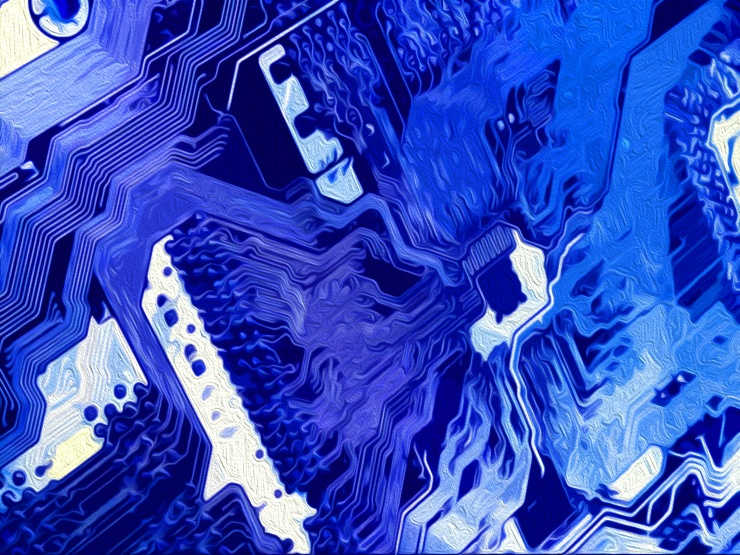If you’ve been scrolling through the internet lately, you’ve probably heard of ChatGPT. You may have even read text written by the chatbot without knowing it.
We’ve put together this guide to explain what ChatGPT is, how it works and what’s new with ChatGPT Plus and the latest ChatGPT-4 model.
What is ChatGPT?
ChatGPT is a chatbot created by the artificial intelligence research company OpenAI that was first released in November 2022. The name ChatGPT stands for Chat Generative Pre-trained Transformer.
ChatGPT is designed to generate conversational text in response to a prompt. It follows a dialogue format, meaning it is capable of answering follow-up questions, admitting to mistakes, challenging incorrect premises and turning down inappropriate requests, among other things.
The chatbot can be used to answer questions, create copy, draft essays, debug code and generate stories, among other things. To put that into context, it probably could have churned out this 500-word guide in a matter of seconds.
As you can imagine, this has led to legitimate concerns regarding plagiarism in schools and universities, as well as the future of jobs in sectors like journalism and copywriting.
The model isn’t perfect by any means at this point, but it does generate impressive results in a fraction of the time it would take a human and it’s only likely to get smarter as time goes on. This can make it tricky to detect whether an essay or piece of copy was written by a person or the AI model, especially for those unaware of the application.
Image: OpenAI
How does ChatGPT work?
Up until recently, ChatGPT was based upon a finetuned version of OpenAI’s GPT-3.5 deep learning language model. The chatbot is considered a sibling model to InstructGPT, a model trained to follow instructions by providing a detailed response to a prompt.
The ChatGPT model was trained using a method called Reinforcement Learning from Human Feedback, or RLHF. This means that human AI trainers provided conversations in which they played the parts of both the user and the AI assistant. The AI trainers based their “AI” responses upon actual model-written suggestions and the new dialogue was then mixed with OpenAI’s InstructGPT dataset.
Then, the company created a reward model by taking conversations that AI trainers had with the chatbot and having the AI trainers rank different responses from best to worst.
OpenAI recently launched a major update to ChatGPT with ChatGPT-4.
The newest version of the AI chatbot is based on OpenAI’s GPT-4 model, which the company describes as the “latest milestone in OpenAI’s effort in scaling up deep learning”.
If you’ve experimented with Microsoft’s latest version of Bing, you might already be familiar with what ChatGPT-4 is capable of. To put it succinctly, the update now lands in the top 10% of test takers for the US bar exam. ChatGPT-3.5 was in the bottom 10%.
ChatGPT-4 is also 82% less likely to offer harmful advice than the previous version.
Perhaps the most impactful update is that ChatGPT-4 now supports image input, meaning users can submit images and receive text responses. One fantastic use of this technology is the Be My Eyes app, which OpenAI has partnered with to help visually-impaired people know what they’re looking at by snapping and submitting a photograph to ChatGPT.
To find out more about how ChatGPT-4 compares with ChatGPT-3.5, make sure to check out our versus guide on the subject.
Is ChatGPT free?
ChatGPT is free to use as part of OpenAI’s research preview. This is because the company is looking to gather user feedback to get an idea of the chatbot’s strengths and weaknesses.
OpenAI has shared a list of some of the model’s limitations on its website, which include sometimes generating plausible-sounding but nonsensical answers, requiring a question to be rephrased to generate an answer, overusing certain phrases, not asking clarifying questions for ambiguous queries and exhibiting biased behaviour.
With that in mind, you shouldn’t expect ChatGPT’s responses to be flawless and you’ll probably want to proofread any text you do generate with the bot.
OpenAI also offers a paid version of ChatGPT called ChatGPT Plus. For $20 a month, the company offers general access to the chatbot (even during peak times), faster response times and priority access to new features and updates.
However, you shouldn’t expect to get more complex or advanced responses from ChatGPT with this premium tier. Perks aside, paid users receive access to the same AI and standard features already available to free users.
You can head over to chat.openai.com to try ChatGPT out now.
The post What is ChatGPT? The AI text generator explained appeared first on Trusted Reviews.
————————————————————————————————————————————————————————————
By: Hannah Davies
Title: What is ChatGPT? The AI text generator explained
Sourced From: www.trustedreviews.com/explainer/what-is-chatgpt-4297405?utm_source=keystone&utm_medium=keystone_core_reviews_rss&utm_campaign=trusted+reviews
Published Date: Thu, 16 Mar 2023 16:00:00 +0000

Leave a Reply